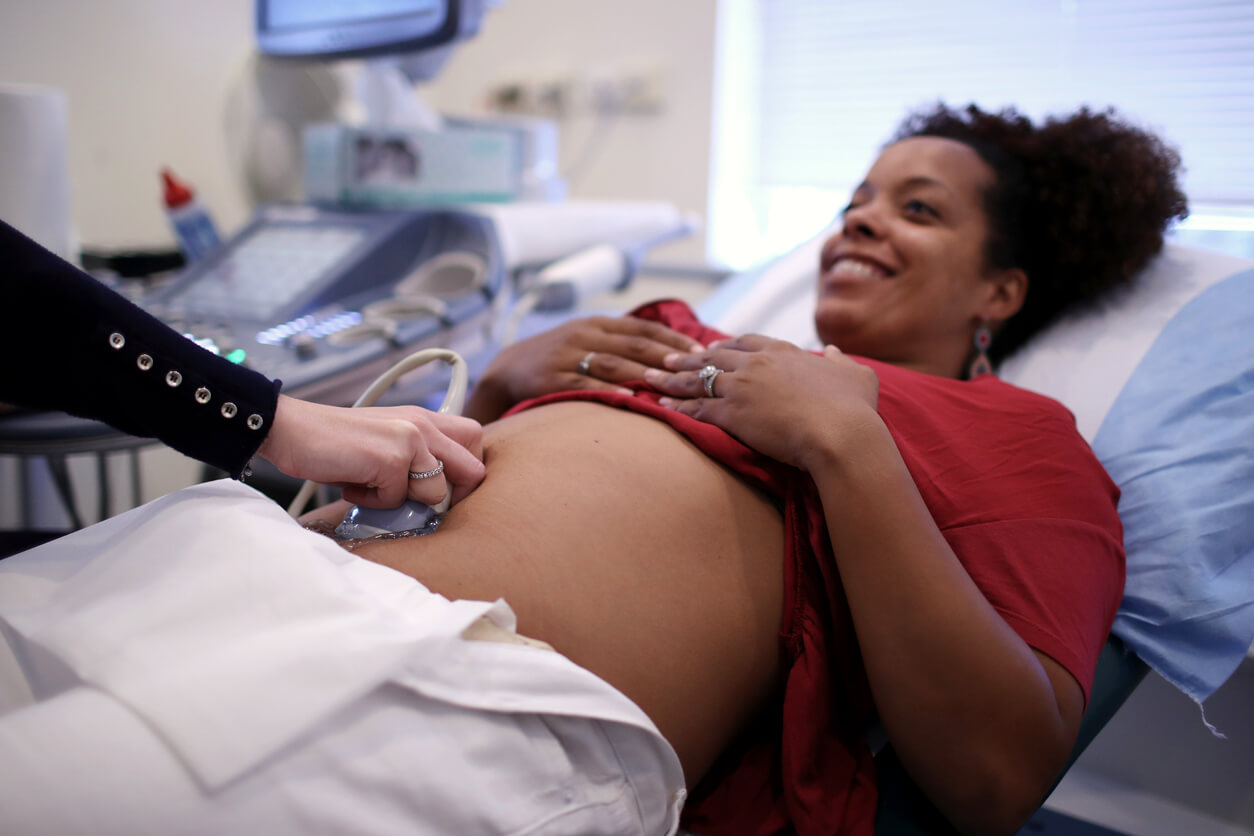You’ve made it to Week 20 of your pregnancy. Congratulations! Now that you’ve made it halfway through your pregnancy, you get to experience one of the most exciting parts of the journey: the 20 week anatomy scan.
Most expectant mothers look forward to the 20 week ultrasound because it determines the sex of the baby and lets the sonographer check for general health and measurements. You’ll also leave the 20 week anatomy scan with printed pictures of your little baby that you can share with your loved ones.
If you’d like to know more information about what the technician is checking, read on. We’ve got you covered.
What is the 20 Week Anatomy Scan?
The 20 week anatomy scan is an ultrasound. An ultrasound uses high-frequency sound waves to create a picture on the computer screen. You’ll be able to see inside your womb and a moving image of your baby.
Your technician will cover your belly in warm gel. Then, they’ll gently glide the transductor, or ultrasound wand, over your belly. When they glide the transducer over your belly, you’ll see different angles of the baby. They’ll be able to monitor your baby’s development and take notes of their growth.
What Your Healthcare Provider is Checking
As they’re moving the transductor along your belly, the technician will be measuring, monitoring, and taking notes of your baby’s condition. They’re looking for many things that indicate the baby’s overall health, as well as any potential abnormalities or concerns. They will focus on:
Face
Your healthcare provider may be able to see your baby’s face depending on how they’re positioned. If your baby’s face is visible, they’ll check to see if there’s a cleft lip. Clefts of the lip and palate are the fourth most common birth defect in the US.
If your doctor finds a cleft in the lip or palate during the ultrasound, you’ll work with a team of specialists after the birth of the baby.
Brain
The sonographer will be checking to see if there are any cysts in the baby’s brain. They’re specifically looking in the cerebellum, or the back of the brain. Cysts can mean there’s a greater chance for a chromosomal abnormality, but most fetal cysts disappear by the 28th week of pregnancy.
Spine
Your technician will check your baby’s vertebrae to make sure they’re in alignment. They’ll also want to see that skin is covering the spine in the back.
They’ll check for spinal abnormalities such as spina bifida. Spina bifida is a condition where the spinal cord doesn’t develop properly in the womb, so there’s a gap in the spine. Spinal abnormalities are usually pretty clear in the ultrasound.
Heart
Your technician will pay special attention to the baby’s heart because congenital heart defects are some of the most common birth defects and causes of infant death. If your technician sees an abnormality during the 20 week anatomy scan, you can plan and prepare a medical team for your baby’s care after birth.
Genitals
As long as the sonographer can see your baby’s genitals, they can tell you the sex of your baby. To identify a female, they’ll look for a clitoris, vulva, and labia. For a male, they’ll identify a penis, scrotum, and testicles.
Even though your technician is probably right, there’s always a small chance they’ll misidentify the sex. They may not even see the genitals clearly at the 20 week anatomy scan. If they can’t identify the gender at the 20 week appointment, they may ask you to come back for another ultrasound.
The Placenta
The sonographer will also look at the placenta positioning. They’ll want to see that the umbilical cord has three vessels and enter the baby’s abdomen normally. They’ll also want to see enough amniotic fluid around the baby to ensure they can move freely.
What You Can Expect
Expect to get comfortable, because you’ll be in the doctor’s office for a long time. The scan itself may be around 45 minutes to an hour, and maybe even longer if you’re considered high risk.
If you feel stiff or uncomfortable during the 20 week ultrasound, don’t be afraid to let your sonographer know. Get up, go to the bathroom, or take a walk around the room and come back.
Even though you are probably anxious to hear the status of your baby, be aware the sonographer isn’t supposed to tell you anything they find. They’re really only supposed to tell you the baby’s sex. Rest assured that no news is good news. If they don’t give you any information, then things probably looked good. Your provider will confirm the results of your 20 week ultrasound with you at your next appointment.
Once you make it to the 20 week ultrasound, you’ll get detailed photos of your baby and hopefully learn enough to pick out your baby’s name. It’s very exciting to see your baby in real time in the ultrasound, so enjoy this special moment!
Are you looking for an OB/Gyn you can trust? Do you live in the Tucson area? Book an appointment today!
References
- https://www.healthline.com/health/pregnancy/20-week-ultrasound#what-it-is
- https://www.whattoexpect.com/pregnancy/pregnancy-health/prenatal-testing-level-two-ultrasound-anatomy-scan/
- https://www.nhs.uk/pregnancy/your-pregnancy-care/20-week-scan/
- https://www.todaysparent.com/pregnancy/being-pregnant/your-20-week-ultrasound/

